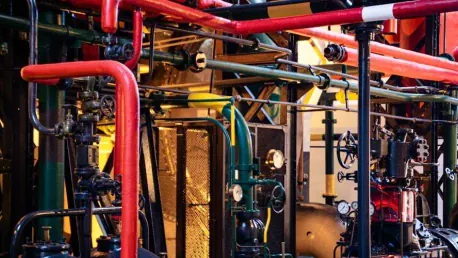New York State is taking a significant step towards reducing fossil-fuel emissions from its numerous large apartment buildings by launching a competition aimed at spurring the development of innovative heat pump technology. Offering a $10 million incentive to manufacturers, this initiative is part of a broader effort to tackle climate change and reduce greenhouse gas emissions. The state’s agencies have recognized the effectiveness of heat pumps in smaller structures like single-family homes, but applying this technology to larger, older apartment buildings presents a unique challenge.
The Challenge of Large, Older Buildings
Existing heat pump models often require costly retrofits to replace traditional heating and cooling systems and are not efficient in sub-zero temperatures. The competition, named Clean Heat for All, aims to create packaged terminal heat pumps capable of supplanting the prevalent packaged terminal air conditioners usually found installed through the wall below windows in multifamily buildings across the state. Hundreds of thousands of these air conditioners exist in New York’s multifamily buildings. They are notoriously inefficient, not only because they provide inadequate air conditioning but also because their replacement with efficient heat pumps could make traditional gas or electric heating systems redundant.
Replacing these outdated and inefficient air conditioners with advanced heat pumps would avoid the need for expensive building or electrical upgrades, ensuring a more seamless transition. This would not only result in significant energy savings but also allow for a reduction in building emissions. Governor Kathy Hochul emphasizes that investing in easily replaceable and efficient units will reduce upgrade costs, save energy for consumers, and lower building emissions. Such investments in technologically advanced units directly support New York’s goal of reducing its carbon footprint.
Incentives and Demonstrations
To incentivize the development and adoption of these new heat pump technologies, the program plans to fund yearlong demonstrations of these heat pump models in multifamily buildings and hotels. The deadline for proposals is February 20, 2025, building on the momentum of previous state-sponsored competitions. One notable example includes a 2021 challenge to develop cold-climate window-unit heat pumps and a subsequent effort to advance centralized heat pump systems. Buildings contribute significantly to New York’s climate problem, accounting for roughly one-third of statewide greenhouse gas emissions, primarily from burning oil and gas for heating.
The issue is further exacerbated by the fact that New York’s buildings, on average, are much older compared to other states, making decarbonization efforts more complex and expensive. This initiative aims to demonstrate effective practical applications of the new technology in real-world settings, providing valuable data and insights for future large-scale deployments. The emphasis on multifamily buildings and hotels underscores the state’s commitment to addressing emissions from high-impact sectors, particularly those with outdated systems that significantly contribute to the state’s overall carbon emissions.
Addressing Climate Goals and Regulatory Requirements
Achieving New York’s ambitious climate goals, notably the aim to reduce carbon emissions by 40 percent by 2030, requires addressing fossil-fuel use in large, older buildings while minimizing costs. In New York City, Local Law 97 mandates that buildings over 25,000 square feet reduce their greenhouse gas emissions starting this year, and heat pumps are a viable solution for property owners to comply with this law. However, there are obstacles to using current heat pump technologies for retrofits, particularly in cold climates. Alexi Miller, director of building innovation at the New Buildings Institute, points out several challenges.
Firstly, the need for more effective refrigerants that can transfer heat efficiently even at sub-zero temperatures is critical. Secondly, the condensation that heat pumps produce can freeze over during winter, leading to ice blockages and other issues. Some window-unit heat pumps address this by using atomizers to spray condensate into the air. Moreover, many large-building heat pump models necessitate backup electric resistance heating when they lose efficiency in extremely cold conditions, posing technical challenges if the building requires electrical upgrades for this heating.
Overcoming Technical Challenges
New York State is making a major push to reduce fossil-fuel emissions from its numerous large apartment buildings by launching a competition designed to encourage the development of advanced heat pump technology. The state has rolled out a $10 million incentive for manufacturers to innovate solutions that can adapt to the specific needs of larger, older apartment complexes. This initiative is a critical component of a broader strategy aimed at addressing climate change and cutting down on greenhouse gas emissions. New York’s agencies have already seen how effective heat pumps can be in smaller structures like single-family homes. However, scaling this technology to fit the requirements of larger, older buildings presents a distinct set of challenges that require innovative approaches. By focusing on the development of heat pump technology suitable for these unique environments, the state hopes to make a significant impact on reducing emissions and moving towards a more sustainable future, setting an example for other states to follow.









